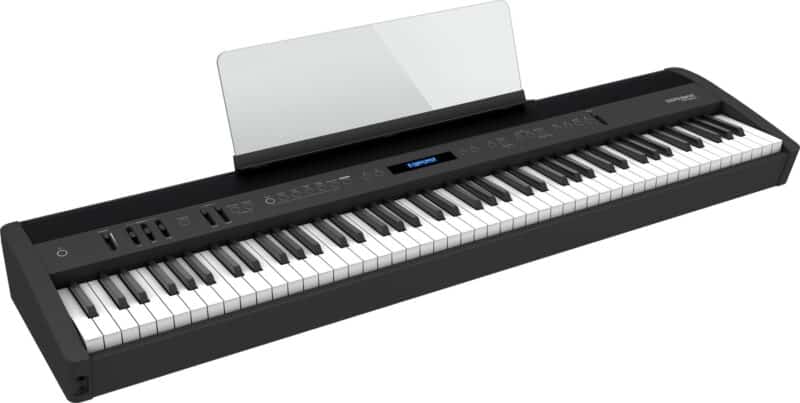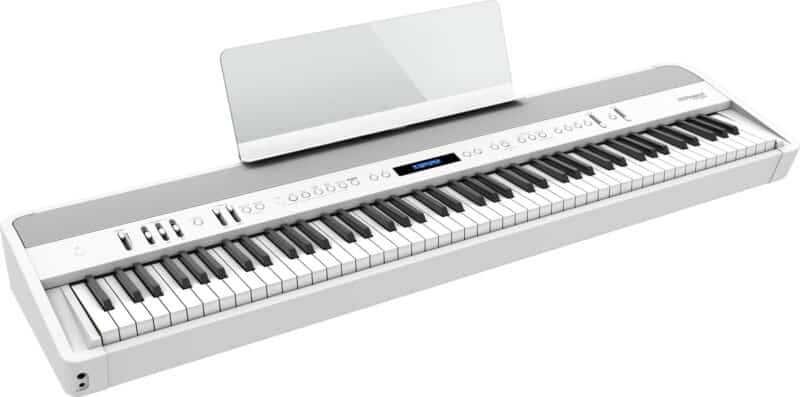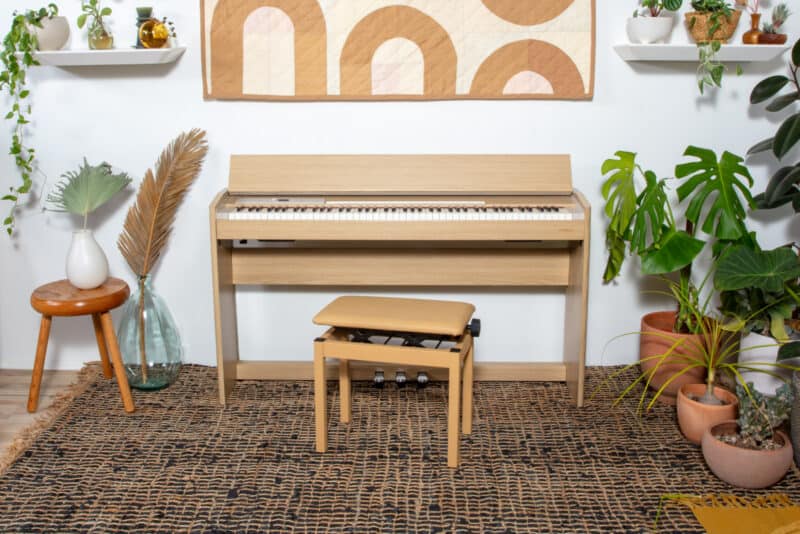2021 has been a big year for Roland with 5, count em’ 5, new Roland digital pianos hitting the market, each one an update to a popular previous model.
In this article, we’ll take a quick glance at each of the 5 models and briefly cover exactly what was approved with each model.
Roland FP-X Series – Overview
As one of the top players in the home digital piano market, pretty much every model Roland offers has been a huge seller. Updates on existing models are usually staggered so that new models come out one or two at a time, but in this case, Roland decided to update 5 models simultaneously.
With the exception of the entry-level FP-10, the entire FP series has been upgraded with the FP-30 is now the FP-30X, the FP-60 is now the FP-60X, the FP-90 is now the FP-90X, while home digital piano F140r has been upgraded to the F701, and the RP501 is now the RP701.
Let’s take a look at each instrument to see exactly what was improved over the previous generation’s model.
Roland FP-30X Digital Piano

When we first saw the spec sheets, we couldn’t wait to get our hands on the FP-30X. Two critical updates that people have been begging for are present here; an increase to the polyphony, which in this case means an increase to the complexity of the piano sound and dedicated line outputs.
The polyphony has literally been doubled from 128 notes to 256, courtesy of the new BMC chip, and this is quite indicative of the extra processing power that the FP-30X is working with.
The twin quarter-inch outputs are a very significant add as they are totally separate from the headphone jack. This means the FP-30X is finally going to become a true gigging piano, which is great because the original FP-30 was always right on the cusp of being a killer gigging piano. The FP-30 was undoubtedly an excellent instrument, but adding the twin line outputs brings it to a whole new level.
Rounding out the improvements are 21 additional onboard sounds including improved piano tones, and the addition of Bluetooth audio connectivity. The FP-30 had Bluetooth MIDI for connection to music apps like Garageband, but the Audio functionality is a very welcome addition as it allows you to use the FP-30X to stream music directly from the onboard speakers.
The FP-30X again comes standard with a damper pedal, but you can upgrade to the three-pedal unit KPD 70 and KSC 70 matching optional stand.
Early feedback on the FP-30X has pretty much been unanimous – this is a class-leading instrument in the portable piano category that delivers incredible value.
Roland FP-60X Digital Piano

The FP-60X isn’t the same ‘Home Run’ of an improvement that the FP-30X in the sense that the improvements are not as significant as those found on the FP-30X. That said, Roland didn’t simply roll back the FP-60 and alter the name, there are several improvements that need to be noted.
To start, the total onboard sounds have been expanded to a large trove of 358 sounds, including a great selection of electric pianos, strings, synths, and more, all courtesy of the trusty SuperNATURAL Piano sound engine.
They’ve also improved the stereo speaker design and combined with the BMC chip, the FP-60X is undoubtedly delivering higher fidelity sound than what the FP-60 was capable of.
A couple of other things to mention; they’ve added the My Stage feature, added a mic input, and added 22 additional internal songs.
The FP-60X brings back the PHA4 Standard Keyboard action with escapement and ivory feel, so the improvements are pretty much all sound-related, which of course, isn’t a bad thing.
Roland FP-90X Digital Piano

The FP-90X has a fairly short list of upgrades, but the main upgrade is very substantial – the FP-90X utilizes the brand new PureAcoustic Piano Modeling Engine, which can otherwise only be found in the top two LX-700 series flagship home digital pianos.
This is the latest in piano technology with one of the most sophisticated sound engines available in any digital piano, offering limitless polyphony while on acoustic piano tones, and delivering seriously high-level authenticity. The new ambience effects are particularly noteworthy, and getting in and customizing the sound with the Piano Designer app is tons of fun.
Otherwise, they’ve also expanded the total amount of onboard tones, added a second headphone input, and made the FP-90X compatible with the new Piano Everyday app.
The PHA-50 hybrid wood hammer action with escapement makes a return and maintains its place as one of the best actions available in a portable digital piano with phenomenal playability.
The class-leading onboard speaker system (twin subs and twin dome tweeters) and powerful amplifiers return as well. The FP-90X makes a strong case for being the best all-in-one stage piano available.
Roland F701 Digital Piano

Roland’s F140r was an absolute force in the ultra-competitive mid-range home digital piano market, so like the FP-30X, this is an incredibly important instrument for Roland to get right with the new generation. Fortunately, they did just that.
Let’s start with the appearance. The F701 retains the spirit of the F140r as a modern, highly compact instrument, but they have made the cabinet more robust and durable. The user interface has also been improved and is much easier to operate.
Like the FP-30X, the polyphony has been doubled to a class-leading 256 notes. There’s also a massive list of onboard tones with over 300, also a class-leading spec.
The internal song list has been greatly expanded, and the F701 now incorporates Bluetooth Audio connectivity.
Overall, these improvements represent a sizeable improvement over the F104r.
Roland RP701 Digital Piano

The upgrades the RP701 offers over the RP501 are basically the exact same as the F701, which should come as no surprise given that the F140r and RP501 were very similar instruments aside from the cabinetry.
The relationship stays the same here, but the cabinet differences between the F701 and RP701 are now much more dramatic; the RP701 captures the true look and feel of an acoustic upright piano much better than the RP501 did.
Otherwise, we’ve got all the same upgrades – polyphony increased to 256 notes, more on-board sounds, more internal songs, Bluetooth Audio, and an improved user interface.
The RP701 is a great option for someone looking for the look of an acoustic piano with the functionality of a digital piano, without running into the multiple thousands of dollars.
Conclusions
5 new pianos, all with varying degrees of improvement, though all with the exception of the FP-60X represent a fairly significant level of improvement over their previous incarnations.
Don’t forget to check out our more in-depth produce pages and reviews on YouTube for a closer look at each piano.
Thanks for reading!

